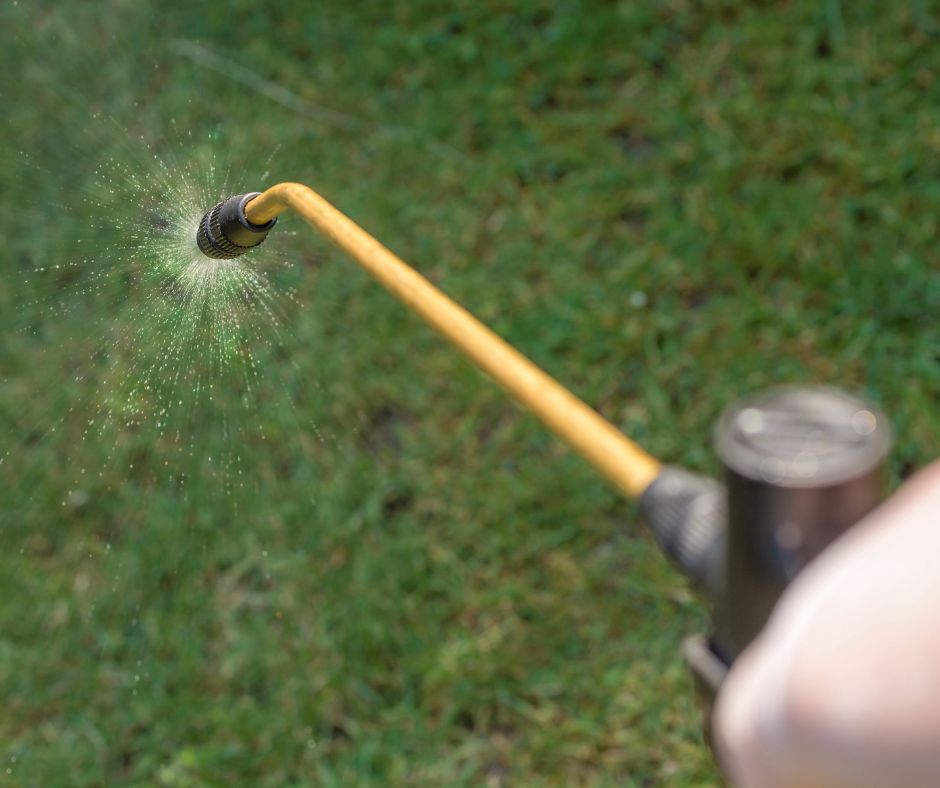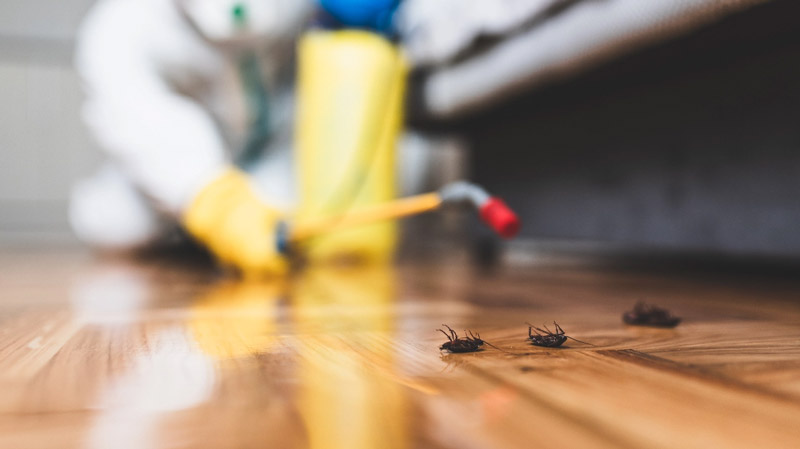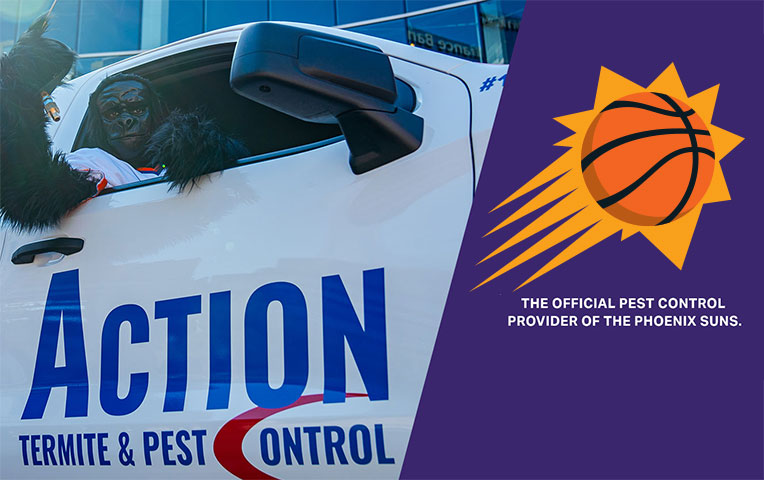Best Pest Control in Charlotte County for Your Property and Business
Find Out About the most up to date Developments in Pest Control and Just How to Implement Reliable Treatment Solutions
In recent times, the area of insect control has witnessed significant innovations, driven by the demand for sustainable and reliable therapy options. Cutting-edge approaches such as Integrated Pest Monitoring (IPM) incorporate environment-friendly exercise with innovative innovation, enhancing both efficacy and ecological duty. The combination of wise technologies and Do it yourself methods has encouraged individuals to tackle bug concerns a lot more properly. As we explore these developments, it comes to be necessary to understand exactly how ideal to implement these techniques in numerous settings to attain ideal results. The ramifications for pest monitoring practices can be transformative.
Eco-Friendly Insect Control Options
In the last few years, the need for green parasite control options has surged as organizations and property owners alike look for lasting choices to typical chemical therapies. This change is driven by growing environmental understanding and a desire to reduce the health dangers connected with synthetic chemicals.

Eco-friendly bug control methods incorporate a variety of approaches that prioritize making use of all-natural compounds and methods. Integrated Pest Monitoring (IPM) is one such method, incorporating biological, cultural, and mechanical techniques to manage parasite populations while lowering dependence on chemicals (Wildlife removal services). This all natural method highlights prevention with habitat adjustment and the introduction of natural killers, therefore fostering a balanced ecosystem
One more preferred option is the use of agricultural pesticides stemmed from plants, which tend to be less harmful to non-target microorganisms. Products like neem oil and diatomaceous planet have actually gained traction for their performance in controlling insects while posing very little threats to human health and the environment.
Furthermore, exclusion strategies, such as sealing entrance points and keeping sanitation, play an essential duty in environment-friendly parasite management. By embracing these lasting methods, businesses and individuals can efficiently take care of parasites while promoting a healthier world for future generations.
Smart Modern Technology in Parasite Monitoring
Innovation is improving the landscape of parasite administration, with wise modern technology arising as a critical pressure in improving effectiveness and efficiency - Wildlife removal services. The combination of Internet of Things (IoT) tools, synthetic intelligence (AI), and data analytics is transforming how bug control specialists come close to invasions
Smart traps geared up with sensors can identify pest task in real-time, sending out instant notifies to drivers. This enables timely reactions, minimizing damages and minimizing the need for considerable therapies. Furthermore, AI algorithms assess historic data to predict parasite habits, allowing aggressive treatments based upon ecological conditions and infestation patterns.
Drones and computerized cars are also playing a substantial function in parasite monitoring, giving aerial assessments of big areas, recognizing hotspots, and even distributing targeted therapies. These innovations not only improve operations but likewise enhance safety and security by limiting human direct exposure to possibly damaging chemicals.
Furthermore, mobile applications encourage consumers to check insect activity and accessibility expert suggestions, fostering a joint method to pest monitoring. Generally, the adoption of smart innovation is establishing a brand-new requirement in parasite control, emphasizing data-driven choices and lasting practices that eventually profit both specialists and home owners alike.
Integrated Insect Monitoring Techniques
Integrated Bug Monitoring (IPM) employs an alternative strategy to pest control, combining different approaches to effectively handle bug populaces while decreasing dangers to human health and wellness and the setting. IPM revolves around understanding the pest life cycle, their all-natural opponents, and the environment in which they grow.
One of the fundamental components of IPM is monitoring pest populations through routine assessments and information collection. This enables the recognition of parasite limits, establishing when treatment is essential. Social practices, such as crop cleanliness, rotation, and habitat adjustment, are important in lowering pest prevalence and promoting plant health.
Mechanical controls, including traps and obstacles, are also essential in IPM. These methods can literally eliminate or prevent insects without using chemicals. When necessary, the cautious application of chemical controls is utilized, focusing on targeted therapies that lessen environmental impact.
Education and partnership amongst stakeholders, consisting of reference farmers, insect control professionals, and the area, are vital for the effective application of IPM strategies. By focusing on sustainable techniques, IPM not just addresses pest concerns yet likewise fosters a much healthier environment.
Biological Control Methods
Many biological control methods are significantly recognized for their performance in handling insect populations while promoting environmental equilibrium. These techniques harness all-natural killers, bloodsuckers, and pathogens to minimize pest numbers without depending on artificial chemicals. The intro of ladybugs can efficiently regulate aphid populaces, while nematodes target soil-dwelling pest larvae.
In addition, the use of microbial chemicals, such as Bacillus thuringiensis (Bt), offers an eco-friendly choice for taking care of caterpillar bugs. These products specifically target pest species, reducing injury to valuable insects and pollinators. Moreover, preservation biological control highlights boosting environments for natural adversaries, such as birds and helpful insects, consequently urging their presence in farming systems.
Study continues to disclose innovative techniques within this area, such as making use of pheromones to disrupt pest mating patterns or the advancement of biocontrol agents through genetic modification. Implementing these methods can result in lasting parasite monitoring techniques that minimize the dependence on chemical treatments, eventually promoting healthier environments. As understanding of these methods grows, they are ending up being integral parts of integrated insect monitoring (IPM) techniques, offering an equilibrium in between efficient pest control and ecological stewardship.
DIY Pest Control Solutions
As homeowners seek efficient methods to deal with parasite issues, DIY parasite control remedies have actually acquired popularity for their ease of access and cost-effectiveness. These approaches encourage individuals to deal with problems utilizing easily offered materials and techniques, frequently without the demand for expert intervention.

Furthermore, preserving proper hygiene and routine assessments can avoid pest entrance and nesting (Wildlife removal services). Basic practices, such as securing fractures, removing food resources, and decluttering, can dramatically diminish insect populations. Traps, both homemade and commercially available, can likewise provide effective remedies for tracking and controlling certain pests like bugs or rats

Verdict
The combination of environmentally friendly parasite control options, wise modern technology, and cutting-edge administration methods presents an extensive technique to reliable pest monitoring. By accepting Integrated Bug Monitoring (IPM) and utilizing biological control techniques, along with Do it yourself options, sustainable and responsible bug control can be attained.
Eco-friendly insect control approaches include a variety of methods that focus on the usage of all-natural materials and techniques. Integrated Pest check my blog Administration (IPM) is one such strategy, incorporating organic, social, and mechanical methods to take care of bug populaces while reducing dependence on chemicals. As recognition of these strategies expands, they are coming to be integral elements of incorporated bug administration (IPM) methods, using a balance between efficient pest control and ecological stewardship.
The assimilation of green parasite control choices, wise innovation, and cutting-edge monitoring methods provides a detailed technique to efficient insect management. By accepting Integrated Bug Management (IPM) and utilizing organic control techniques, alongside Do it yourself options, lasting and liable pest control can be attained.